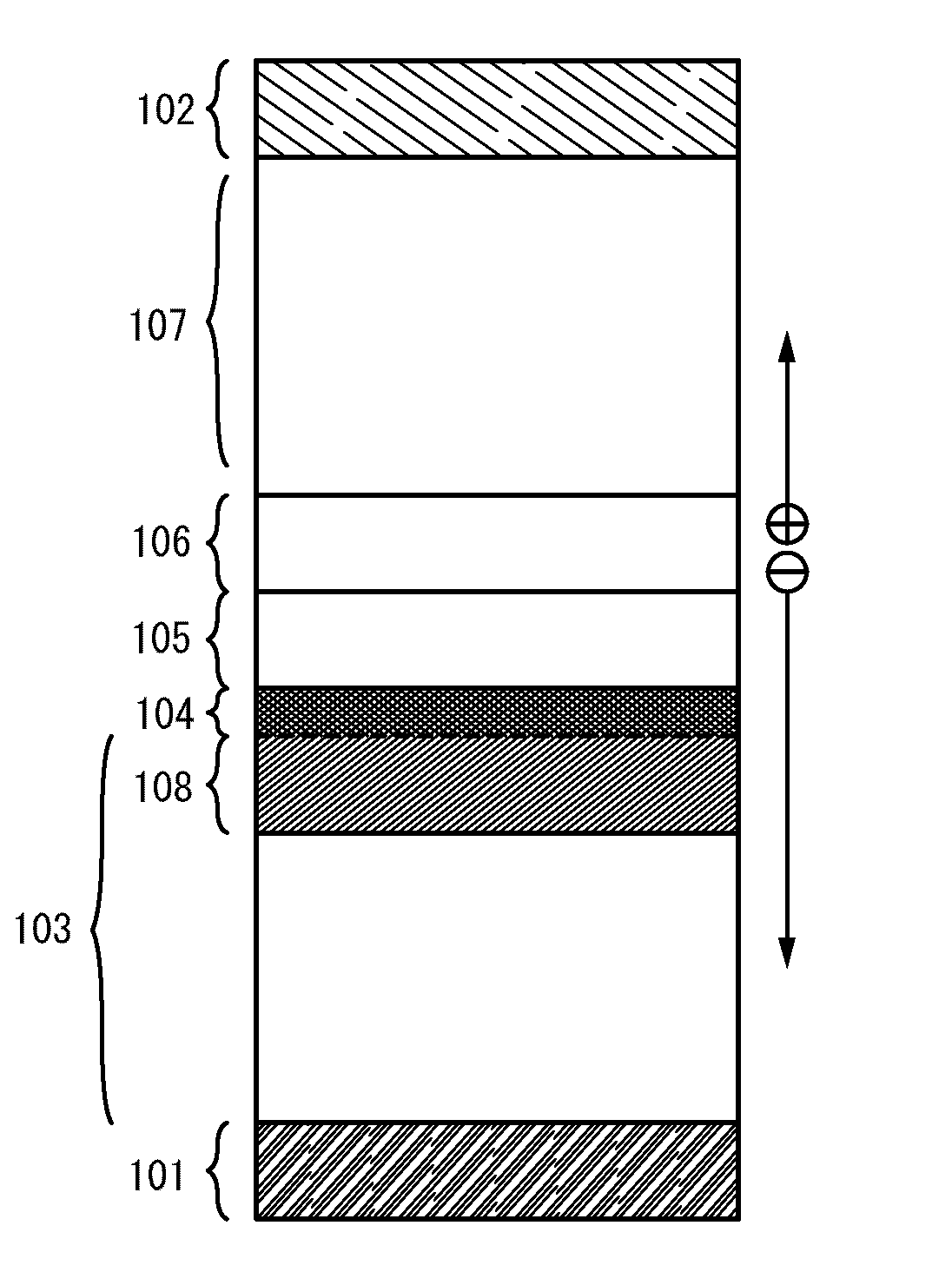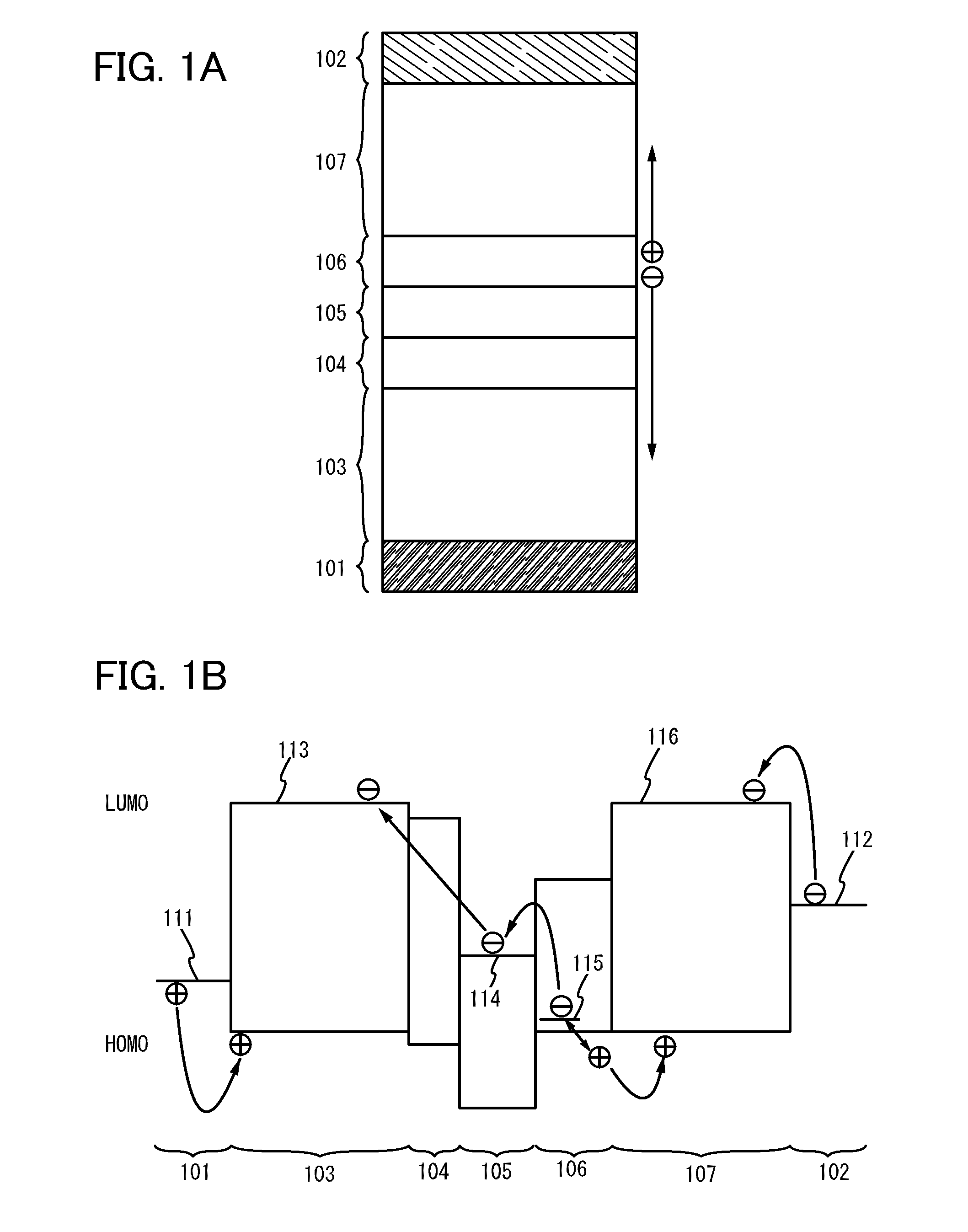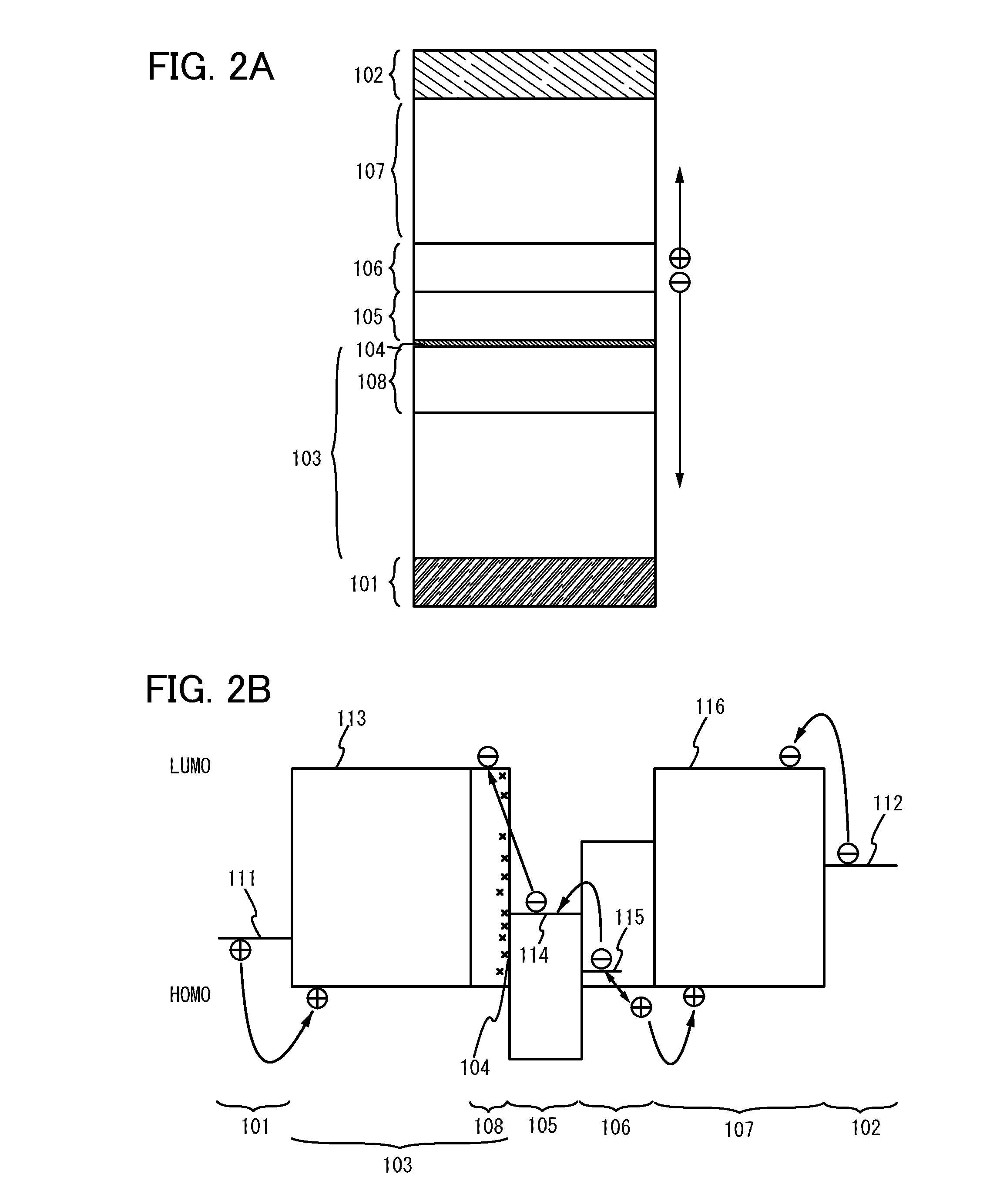Light-emitting element, light-emitting device, lighting device, and electronic device
a technology of light-emitting elements and light-emitting devices, which is applied in the direction of semiconductor lamps, electrical devices, semiconductor devices, etc., can solve the problems of high voltage needed for driving the light-emitting element, acceleration of deterioration of the light-emitting element, and reducing power consumption, so as to achieve low power consumption and low power consumption
- Summary
- Abstract
- Description
- Claims
- Application Information
AI Technical Summary
Benefits of technology
Problems solved by technology
Method used
Image
Examples
embodiment 1
[0056]In Embodiment 1, one embodiment of a light-emitting element will be described with reference to FIGS. 1A and 1B.
[0057]In an element structure illustrated in FIG. 1A, a first EL layer 103 and a second EL layer 107 each including a light-emitting region are sandwiched between a pair of electrodes (an anode 101 and a cathode 102), and between the first EL layer 103 and the second EL layer 107, an electron-injecting buffer 104, an electron-relay layer 105, and a charge production region 106 are stacked in this order from the anode 101 side.
[0058]The charge production region 106 is a region containing a material having a high hole-transporting property and an acceptor material, where holes and electrons that are carriers of the light-emitting element are produced. The holes produced in the charge production region 106 move to the second EL layer 107 while the electrons move to the electron-relay layer 105. Further, since the electron-relay layer 105 has a high electron-transporting...
embodiment 2
[0105]In Embodiment 2, an example of the light-emitting element included in the basic structure described in Embodiment 1 will be described with reference to FIGS. 2A and 2B. Specifically, a case where the electron-injecting buffer 104 has a single layer of an alkali metal, an alkaline earth metal, a rare earth metal, or a compound thereof will be described.
[0106]As illustrated in FIG. 2A, in a light-emitting element described in this embodiment, the first EL layer 103 and the second EL layer 107 each including a light-emitting region are sandwiched between a pair of electrodes (the anode 101 and the cathode 102), and between the first EL layer 103 and the second EL layer 107, the electron-injecting buffer 104, the electron-relay layer 105, and the charge production region 106 are stacked in this order from the anode 101 side.
[0107]The anode 101, the cathode 102, the first EL layer 103, the second EL layer 107, the charge production region 106, and the electron-relay layer 105 in Em...
embodiment 3
[0113]In Embodiment 3, an example of the light-emitting element included in the basic structure described in Embodiment 1 will be described with reference to FIGS. 3A and 3B. Specifically, a case where the electron-injecting buffer 104 of the light-emitting element described in Embodiment 1 contains a material having a high electron-transporting property and a donor material.
[0114]As illustrated in FIG. 3A, in a light-emitting element described in this embodiment, the first EL layer 103 and the second EL layer 107 each including a light-emitting region are sandwiched between a pair of electrodes (the anode 101 and the cathode 102), and between the first EL layer 103 and the second EL layer 107, the electron-injecting buffer 104, the electron-relay layer 105, and the charge production region 106 are stacked in this order from the anode 101 side. In addition, the electron-injecting buffer 104 contains a material having a high electron-transporting property and a donor material.
[0115]N...
PUM
 Login to View More
Login to View More Abstract
Description
Claims
Application Information
 Login to View More
Login to View More - R&D
- Intellectual Property
- Life Sciences
- Materials
- Tech Scout
- Unparalleled Data Quality
- Higher Quality Content
- 60% Fewer Hallucinations
Browse by: Latest US Patents, China's latest patents, Technical Efficacy Thesaurus, Application Domain, Technology Topic, Popular Technical Reports.
© 2025 PatSnap. All rights reserved.Legal|Privacy policy|Modern Slavery Act Transparency Statement|Sitemap|About US| Contact US: help@patsnap.com



